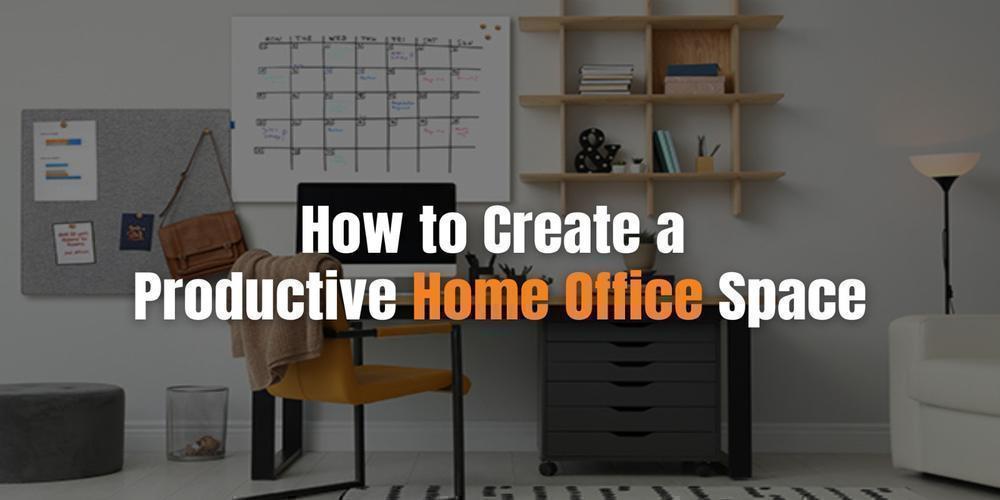

In today's remote-working era, a well-designed home office is no longer a luxury; it's essential. Whether you work full-time from home or juggle hybrid tasks, the space you choose to work in directly affects your productivity, comfort, and mental focus. Creating a productive home office isn't just about buying a desk and a chair; it's about creating a space that fosters productivity. It involves thoughtful planning around layout, lighting, ergonomics, and even personalization. Here's how to design a home office space that encourages focus, minimizes distractions, and supports your work-from-home productivity from start to finish.
1. Choose the Right Location
The first step is to identify a quiet, distraction-free zone in your home. Ideally, this should be a separate room with a door to signal work boundaries. If space is limited, choose a corner that is away from the household's high-traffic areas. Natural light is a huge plus, as it boosts mood and reduces eye strain. Consider positioning your desk near a window, but avoid Glare on your computer screen. This is especially helpful for those looking into small home office ideas.
2. Invest in Ergonomic Furniture
Comfort matters, especially when spending long hours at your desk. Invest in an adjustable chair that supports your lower back and helps maintain proper posture. Your desk should offer ample space for your computer, paperwork, and accessories. The height of your screen should be at eye level to prevent neck strain. An ergonomic home office setup, complete with tools such as a keyboard tray, footrest, or standing desk, can make a significant difference in your daily comfort and productivity.
3. Optimize Lighting and Minimize Glare
Good lighting reduces fatigue and helps you stay alert. If you don't have access to natural light, opt for layered lighting: a mix of ambient ceiling lights and task lighting such as a desk lamp with adjustable brightness. Avoid harsh fluorescent lighting or direct screen glare. Soft, warm tones can create a more welcoming and less clinical environment, helping you stay relaxed yet focused. Lighting is a key component of any remote work setup.
4. Keep It Organized and Clutter-Free
A cluttered space leads to an untidy mind. Utilize shelves, file organizers, and storage boxes to keep documents and supplies organized and neatly arranged. Cable management systems can prevent tangled cords, while desktop trays or drawers can help you maintain a tidy surface. These are must-haves in your list of home office essentials. Set aside five minutes at the end of each day to declutter and reset your workspace it pays off in productivity the next morning. If you're looking for desk organization tips, this small habit goes a long way.
5. Personalize Without Overdoing It
While you want to keep your space professional, adding personal touches can boost morale. A framed photo, indoor plant, or inspiring artwork can bring positive energy to the room. However, avoid going overboard—too many visual elements can become distractions. The goal is to create a space that feels inviting and uniquely yours while still supporting productivity.
Conclusion
Creating a productive home office goes far beyond aesthetics. It's about building an environment that supports your workflow, protects your physical health, and keeps your mind sharp. By selecting the correct location, investing in ergonomic home office furniture, utilizing optimal lighting, staying organized, and thoughtfully personalizing your space, you can transform any corner of your home into a remote work setup that suits you. A well-designed office enhances both your work and overall well-being, making it one of the most valuable home office essentials for long-term success in today's work-from-home culture.